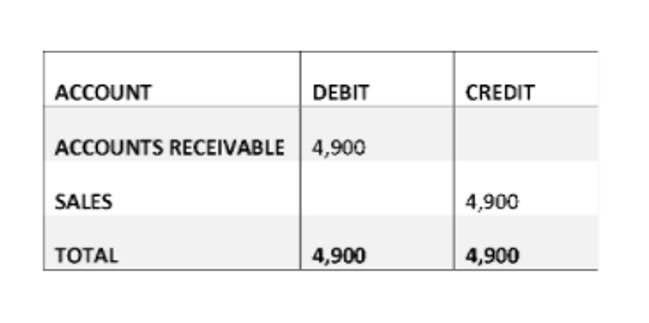
A complete guide to paying federal estimated quarterly taxes, including who is required to pay them, how to pay, deadlines, and what happens if you miss the payment deadline. The IRS requires you to make payments on quarterly estimated taxes when you’re making money from any source that isn’t subject to regular withholding. If you have a low tax liability (less than $1,000) or have met the safe harbor provisions, you may be exempt from paying estimated taxes. The safe harbor provision is paying either 90% of your current year’s taxes or 100% of your previous year’s taxes. You can also avoid paying estimated taxes if you increase your W-2 withholding.
- The IRS expects you to pay taxes as you earn, not just at tax time.
- Certain discount offers may not be valid for mobile in-app purchases and may be available only for a limited period of time.
- In addition to managing estimated tax payments, self-employed individuals should also plan for other financial commitments.
- If you’re married to someone who has taxes automatically taken out of their paycheck, they may have enough taxes withheld to cover both of you, Kane explains.
- You’ll notice that the brackets vary depending on whether you are single, married or a head of household.
The Federal Income Tax: How Are You Taxed?

You can use the Self-Employment Tax Worksheet (page 6) of Form 1040-ES Instructions to estimate your self-employment tax for the year. Online payments are typically faster and come with instant confirmation. While approval isn’t guaranteed, consistently making payments can improve your chances of favorable consideration from the IRS. The calculations can get complicated quickly, so it’s a good idea to consult with a qualified tax preparer if you have questions. Plus, there are special rules for farmers, fishermen and certain household employers. My income will change for next year as I will be required to take a required minimum withdrawal from my 401K, thus the 1040-es information needs to be adjusted.
Taxes:
Even if it turns out that you owe $60,000 in taxes this year instead of $30,000, because you paid 100% of the previous year’s taxes in estimated payments, the IRS won’t charge you an underpayment https://www.bookstime.com/articles/professional-bookkeeping-service penalty. So even if you’ve got absolutely no idea how much you’ll owe for the current year, you can still use the previous year’s numbers to calculate your estimated payments. Even if those payments end up being way off the mark, you won’t owe a penalty. You may have to pay a penalty if you don’t pay enough tax through withholding and estimated tax payments.
How do I know what my estimated tax payment is for 2025
If you don’t think you can afford your full tax bill, then you should pay as much as you can and contact the IRS. The agency may be able to offer you a few payment options to help you pay off your bill. For example, the IRS may offer a short-term extension or temporarily delay collection. You may also have the option to pay your remaining bill over multiple installments.

Simply input your income tax information in the required fields and click “Calculate” to view your results. The results provide a better view of your quarterly tax liability, ensuring enough tax to avoid an underpayment penalty. If you have little or no income tax withheld from wages and earn significant other income, you may need to make quarterly estimated tax payments to the Internal Revenue Service (IRS). Otherwise, you could owe interest and penalties when you file your tax return. No, you may still need to make estimated tax payments even if you are not self-employed. This can occur in cases where you receive a relatively large portion of your total income from sources that are not subject to withholding taxes, such as dividends or interest income.

Women Talk Money

Fortunately for the smallest businesses, the penalty doesn’t kick in unless you owe more than $1,000 in tax. You can also avoid an IRS penalty if you pay 100% of the tax your business owed in the previous year as estimated taxes for this year. That would mean that you pay the same amount as your tax obligation for 2024 over the course of 2025 as estimated payments.
Getting ahead of your quarterly tax deadlines with Bench Accounting
Quarterly taxes are due on the 15th of April, June, September and January (of the following year). If the 15th falls on a weekend or legal holiday, then quarterly tax payments are due the next business day. The method of paying 110% (or 100%) of the current year’s tax liability is only to avoid the interest penalty for underpaying your taxes in the following year. In the TaxAct program, this amount is calculated on Form 2210 Underpayment of Estimated Tax by Individuals, Estates, and Trusts, Line 4. Use the worksheet method to estimate tax for the following year if you online bookkeeping wish to cover all of the estimated tax that will be due on that return. Add up your projected income from all sources, subtract deductions and credits, and apply the relevant tax rates.

Maximize your business’s financial health with Bench Accounting. Enjoy a free month of expert bookkeeping and focus on growth, not numbers. Many, or all, of the products featured on this page are from our advertising partners who compensate us how do i calculate estimated federal tax payments when you take certain actions on our website or click to take an action on their website. Here is a list of our partners and here’s how we make money. We believe everyone should be able to make financial decisions with confidence. Note that any link in the information above is updated each year automatically and will take you to the most recent version of the webpage or document at the time it is accessed.
- Use the prior year safe harbor when you’re having a growth year and don’t want to stress about tax projections.
- When figuring your estimated tax for the current year, it may be helpful to use your income, deductions, and credits for the prior year as a starting point.
- Our partners cannot pay us to guarantee favorable reviews of their products or services.
- If you’re a calendar year taxpayer and at least two-thirds of your gross income for 2024 or 2025 is from farming or fishing, you have only one payment due date for your 2025 estimated tax, January 15, 2026.
- I hope to alleviate those fears and provide you with this ultimate guide to estimated taxes.
Who should pay estimated taxes?
The IRS expects you to pay taxes as you earn, not just at tax time. This method could be best for people whose income fluctuates substantially from year to year, as well as from quarter to quarter. It makes it possible to avoid underpayment and corresponding penalties—and a potentially high quarterly tax bill when you didn’t earn enough to pay it. You’ll need to set up an account to use this payment method, but I recommend all taxpayers do that at some point anyway. It’s the only way to easily view your tax records and transcripts — useful if you ever fall behind on your taxes and need to file them a few years late. To avoid an overpayment or underpayment penalty, you can pay either at least 90% of this year’s tax bill, or pay the same amount (100%) as the taxes you owed the prior year, whichever is smaller.
